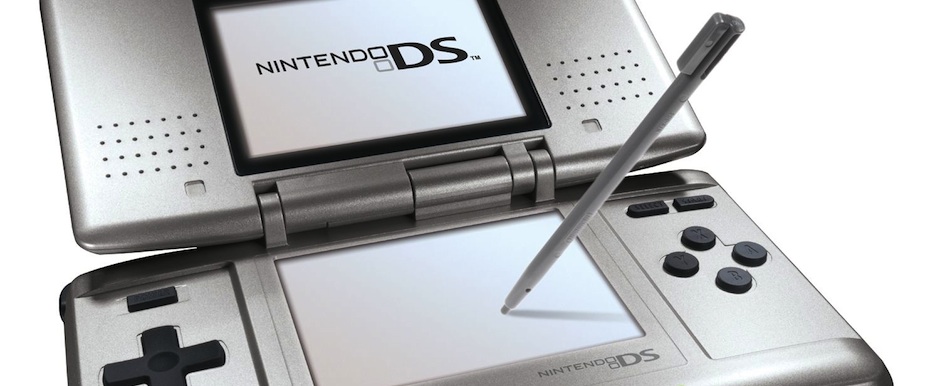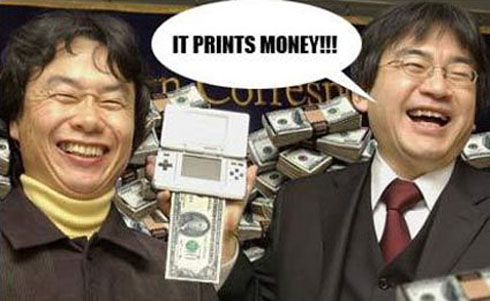We saw four major iterations of the Nintendo DS, including the original, DS Lite, DSi, and DSi XL. Each version brought with it a bunch of new features, some of which included cameras, bigger screens, and smaller profiles.
Well, Nintendo is finally putting the DS on its last leg, and we thought it important to go over all the things we loved about the DS.
It’s hard to believe that Nintendo’s “third pillar” platform came out a full eight years ago, in November 2004. The console has endured over a thousand games, tons of wacky accessories, a new cartridge format, and of course, touch-based dual screen gameplay.
Our first memory of Nintendo’s DS was when people were speculating what it would look like. Nintendo announced that it was working on a dual-screen device but didn’t show off the device until a little while later, much like their Wii U announcement. There were dozens of mockups of the console, most based on a Game Boy Advance SP that had a third fold hiding an extra screen. When we first saw the actual device, we’ll admit, we were a bit underwhelmed, but the console sold plenty of units, enough even to spark this photo:
When it was released, there weren’t many system-selling titles available until months after its release, except for one title carried over from the Nintendo 64, Super Mario 64 DS. Of course, that one title was enough to make the system worth every penny because that was, believe it or not, our first foray into a 3D Mario, and having it anywhere you go was a huge bonus.
As the years went on, we got games like Nintendogs which proved to be insanely popular, as well as new entries in the Legend of Zelda franchise with Spirit Tracks and Phantom Hourglass, the only two DS games we still have that aren’t Super Mario 64 DS, actually.
We also saw new hardware iterations like the Nintendo DS Lite which drastically reduced the size of the console and gave it more minimalist design cues. Then came the DSi which added a camera to the lid of the DS as well as one on the hinge which let you take photos of yourself. And just as Nintendo has done with 3DS XL, they started the trend back then with the DSi XL, a larger-screened version of the system aimed at the older gaming generation.
One of our fondest memories of the Nintendo DS is actually being able to play all our Game Boy Advance cartridges on the console which meant bringing along our Pokemon and Zelda titles of the years previous.
 The DS also marked the beginning of a more touch-based revolution in gaming as well as consumer electronics. There were not a whole lot of touch screens floating around that weren’t attached to PDAs of some sort, and they certainly had nothing to do with gaming. It’s may be difficult to believe, but Nintendo’s DS came out eight years ago, the device that was arguably the first in the touchscreen revolution we’re in now.
The DS also marked the beginning of a more touch-based revolution in gaming as well as consumer electronics. There were not a whole lot of touch screens floating around that weren’t attached to PDAs of some sort, and they certainly had nothing to do with gaming. It’s may be difficult to believe, but Nintendo’s DS came out eight years ago, the device that was arguably the first in the touchscreen revolution we’re in now.
We want to make it clear that Nintendo has not officially announced the end of Nintendo DS. However, with the 3DS at the price point it is ($169 in North America and roughly the equivalent in other regions) and the 3DS XL picking up any slack of the DSi XL, there really is no reason to buy a Nintendo DS anymore. We’re certain that Nintendo has no plans to release another entry in the DS hardware lineup, though they did give us the Wii mini, so anything is fair game, we guess.
It is also interesting that Nintendo has chosen to release some pretty high-profile titles on the DS even a year and a half after the 3DS launch. The most recent of which was Pokemon Black 2 and White 2, both given excellent reviews by anyone who came in contact with the games. There are a few more Nintendo DS titles on the horizon, though nothing major so far as we can tell. We’re positive Nintendo has moved all mobile development into a mix of Wii U and 3DS titles, and that is going to be where we’ll be seeing new content and product in the future.
So long, Nintendo DS. It’s been fun.


